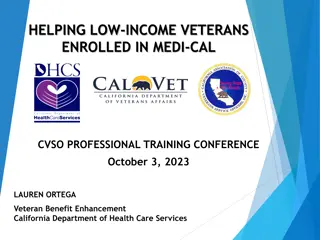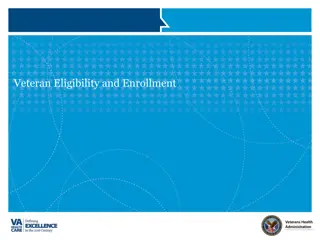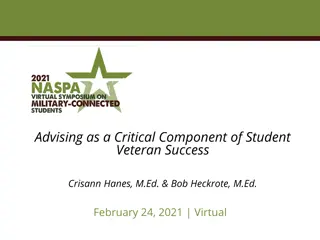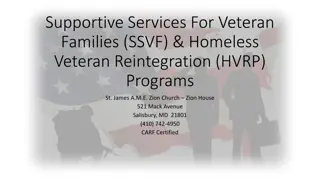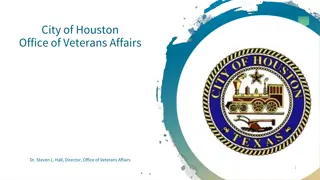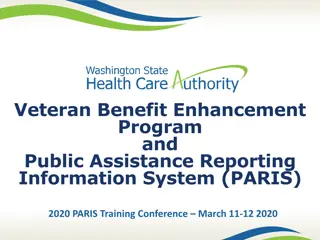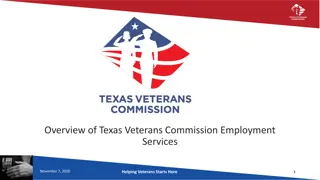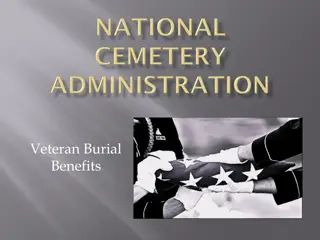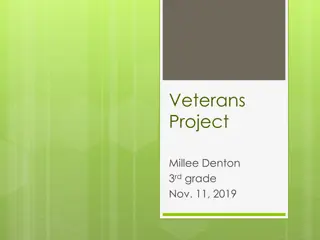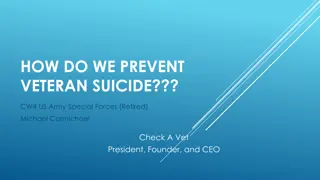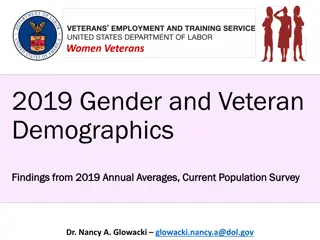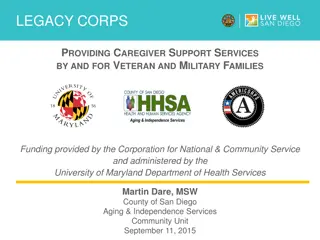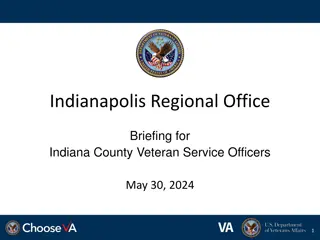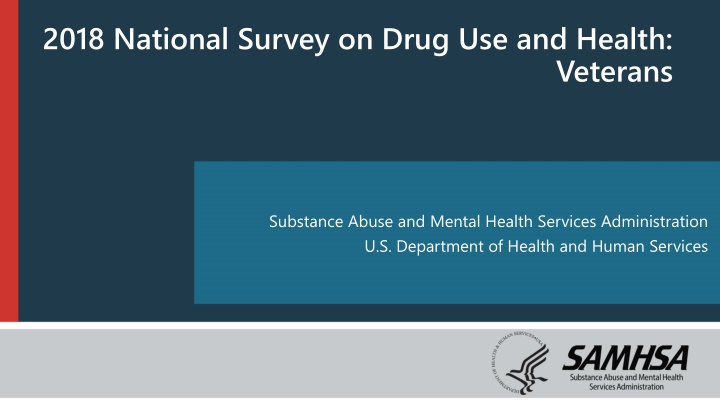
Substance Use and Mental Health Trends in the United States
The National Survey on Drug Use and Health (NSDUH) provides valuable insights into substance use and mental health issues in the United States. This comprehensive survey helps guide policy directions by examining the prevalence of problem substances, mental illness, and the intersection of substance use with mental health issues. The 2017 highlights from the NSDUH report trends such as the opioids epidemic, marijuana use patterns, and gaps in treatment for co-occurring substance use and mental disorders. SAMHSA's response to the 2016-17 NSDUH findings includes new approaches to technical assistance and training, establishment of clinical support systems for serious mental illness, and focus on appropriate use of psychotropic medications.
Download Presentation

Please find below an Image/Link to download the presentation.
The content on the website is provided AS IS for your information and personal use only. It may not be sold, licensed, or shared on other websites without obtaining consent from the author. If you encounter any issues during the download, it is possible that the publisher has removed the file from their server.
You are allowed to download the files provided on this website for personal or commercial use, subject to the condition that they are used lawfully. All files are the property of their respective owners.
The content on the website is provided AS IS for your information and personal use only. It may not be sold, licensed, or shared on other websites without obtaining consent from the author.
E N D
Presentation Transcript
2018 National Survey on Drug Use and Health: Veterans Substance Abuse and Mental Health Services Administration U.S. Department of Health and Human Services 1
National Survey on Drug Use and Health (NSDUH) NSDUH is a comprehensive household interview survey of substance use, substance use disorders, mental health, and the receipt of treatment services for these disorders in the United States. NSDUH is collected face-to-face by field interviewers who read less sensitive questions to respondents and transition respondents to audio computer assisted self-interviewing for sensitive items. NSDUH covers the civilian, noninstitutionalized population, aged 12 or older: Includes: Households, college dorms, homeless in shelters, civilians on military bases Excludes: Active military, long-term hospital residents, prison populations, homeless not in shelters Sample includes all 50 states and DC Approximately 67,500 persons are interviewed annually Data collected from January to December 2
How Do We Use NSDUH? Provides a window into the state of substance use and mental health issues in the United States Helps to guide policy directions: problem substances prevalence of mental illness intersection of substance use and mental health issues provides insights that can be studied in the context of data from other agencies to help in decision-making about what types of resources are needed and where resources should be directed 3
NSDUH 2017 Highlights Opioids epidemic: New users of heroin significantly decreased relative to 2016 Significant decreases in pain reliever misuse were observed for all ages Downward trend in heroin users Estimated 2.1M with opioid use disorder Marijuana: Significant increases in use by young adults (18-25 y.o.): past month and daily/near daily use; with significant increases in use by young adult women Pregnant women using substances in greater numbers including significant increases in daily or near daily marijuana use Frequent marijuana use was associated with opioid misuse, heavy alcohol use, and depression in youth 12-17 and young adults 18-25 Young adults had increasing rates of serious mental illness, major depression, and suicidality Co-occurring substance use and mental disorders are common Major gaps in treatment received by affected individuals 4
SAMHSAs Response to 2016-17 NSDUH Findings 2018: Launch of new approach to technical assistance and training Previous focus on technical assistance to grantees expanded to national approach Establishment of Clinical Support System for Serious Mental Illness National practitioner training efforts Focus on appropriate use and monitoring of psychotropic medications Use of clozapine in treatment refractory schizophrenia Assisted outpatient treatment Establishment of a regional system of Technology Transfer Centers throughout the U.S. Substance Abuse Prevention Technology Transfer Centers Addiction Technology Transfer Centers Mental Health Technology Transfer Centers with supplements for school-based services Training and technical assistance tailored to needs of HHS regions Native American/Alaska Native, Hispanic/Latino focus centers Establishment of new national training/technical assistance programs State Targeted Response/State Opioid Response TA/T Program-over 1000 requests met Privacy Technology Transfer Center addressing confidentiality and information sharing related to HIPAA and 42CFR Eating Disorders Technology Transfer Center 5
SAMHSAs Response to NSDUH Findings Established PCSS-Universities to embed DATA waiver training in pre-graduate education for physicians, nurse practitioners and physician assistants Expanded training and technical assistance on opioids issues in rural America through supplements to USDA Cooperative Extension programs Re-established the Drug Abuse Warning Network (DAWN) Expanded the Suicide Prevention Lifeline network Public targeted messaging based on areas of concern identified in NSDUH: marijuana, methamphetamine, suicide prevention 6
Alcohol Initiates among Veterans Overall US population 18-25 7.2% 8
Alcohol Use among Veterans Overall US population 18-25 55.1% 9
Summary: Alcohol Use in 2018 Significant decrease in initiation of alcohol use among veteran adults aged 18-25 between 2016 and 2018 No significant changes in alcohol use and use disorder among veterans between 2015 and 2018 SAMHSA efforts on reductions in alcohol use in children/youth/transition age youth: CSAP DFC program prioritizes alcohol use and has reported a 27% reduction in use in middle-school and a 23% reduction in use by high school students SAMHSA Prevention Technology Transfer Centers produce resources and materials related to alcohol misuse prevention CSAP Talk They Hear You focuses on underage drinking CSAP requires Partnerships for Success grantees to emphasize underage drinking prevention CSAT has promoted SBIRT for alcohol use in all programs including CJ, PPW, adolescent treatment, HIV and homeless programs CSAT has funded SBIRT training in medical residencies and other healthcare practitioner programs which screen for hazardous alcohol use and use disorders 11
Illicit Drug Use among Veterans: Marijuana Most Used Drug Overall US population 18+ 16.2% Overall US population 18+ 6.3% 12
Prescription Pain Reliever Misuse and Heroin Use among Veterans 15
Prescription Pain Reliever Misuse among Veterans Overall US population 18-25 5.5% Overall US population 26+ 3.4% 16
Misuse of Prescription Opioid Subtypes among Veterans Overall US population 18+ 12.6% Overall US population 18+ 8.7% Overall US population 18+ 7.8% Overall US population 18+ 11.3% 17
Treatment Gains: Number of Individuals Receiving Pharmacotherapy for Opioid Use Disorder (MAT) Total Number receiving MAT (all types) 700000 648,864 1400000 581,613 600000 1,172,371 520,398 1200000 500000 1,028,500 450,247 1000000 921,692 382,867 400000 345,443 800000 300000 600000 200000 400000 100000 73,260 200000 64,020 46,860 0 0 2016 2017 2018 Methadone Buprenorphine 2017 Naltrexone 2016 2018 Note: Estimates do not represent Veterans and are not based on NSDUH. 21
Summary: Opioid Misuse and Use Disorder in the United States in 2018 Significant decreases in prescription opioid misuse and use disorder among veterans aged 18+ between 2015 and 2018. Among veterans using prescription opioids, hydrocodone was the subtype that was most likely to be misused in 2018. 22
Marijuana Use among Veterans Overall US population 18-25 22.1% 24
Marijuana Use among Young Adult Veterans (18-25 y.o.) Overall US population 18-25 22.1% Overall US population 18-25 7.3% 25
Marijuana Use among Young Adult Veteran Men and Women (18-25 y.o.) Overall US population 18-25 22.1% Overall US population Male 18-25 24.2% 26
Significant Increase in Marijuana Use among Veterans Age 26+ 27
Marijuana Use Disorder among Veterans Overall US population 26+ 8.6% Overall US population 26+ 2.8% 28
Daily or Almost Daily Marijuana Use among Women Veterans by Pregnancy Status 30
Substance Use in Pregnancy: Trends in the Right Direction U.S. women aged 18-44 in 2017: Showed a startling increase in substance use and particularly marijuana use in pregnancy: may be associated with fetal growth restriction, stillbirth, and preterm birth; may cause problems with neurological development, resulting in hyperactivity, poor cognitive function (Metz TD and Stickrath EH, 2015) SAMHSA/HHS made strong efforts to address this situation in an effort to improve the health and mothers and their babies: Public awareness efforts: information sharing with stakeholders and the public Launch of SAMHSA.gov/marijuana Launch of Substance Abuse Prevention Technology Transfer Centers with a focus on marijuana and other substance use in pregnancy Expansion of treatment programs for pregnant/post partum parenting women: both residential and outpatient through CARA Publication of Clinical Guidance for Treating Pregnant and Parenting Women with Opioid Use Disorder Publication of Healthy Pregnancy/Healthy Baby Factsheets for women and their families Use of STR and SOR funding for opioid use disorder in pregnancy and prevention interventions Joint article from Assistant Secretary for Mental Health and Substance Use and Surgeon General addressing treatment of opioid use disorder in pregnancy 31
Misuse of Prescription Stimulants among Veterans Overall US population 18-25 6.5% 35
Summary: Other Substance Use in the United States in 2018 Marijuana use significantly decreased among veterans aged 18-25 between 2017 and 2018, but significantly increased among veterans aged 26+ between 2015 and 2018 No significant changes in marijuana use disorder among veterans aged 18-25 and veterans aged 26+ between 2015 and 2018 No significant changes in methamphetamine use, misuse of prescription stimulants, and LDS use among veterans PREVENTION WORKS! 37
Serious Mental Illness (SMI) Rising among Veterans Age 26-49 y.o. 39
Major Depressive Episodes among Veterans Overall US population 18-25 13.8% Overall US population 26-49 8.0% 40
Major Depressive Episodes with Severe Impairment among Young Adult Veterans (18-25 y.o.) 41
Suicidal Thoughts, Plans, and Attempts among Young Adult Veterans (18-25 y.o.) Overall US population 18-25 1.9% 42
Co-Occurring Issues: Substance Use Is More Frequent among Veterans with Mental Illness Overall US population 18+ 37.2% Overall US population 18+ 31.3% Overall US population 18+ 16.3% Overall US population 18+ 9.6% 44
Co-Occurring Issues: Substance Use Is More Frequent among Veterans with Mental Illness Overall US population 18+ 49.4% Overall US population 18+ 36.7% Overall US population 18+ 38.9% Overall US population 18+ 29.2% Overall US population 18+ 13.9% Overall US population 18+ 8.9% Overall US population 18+ 14.6% Overall US population 18+ 15.7% Overall US population 18+ 13.2% 45
Alcohol Use Related to Other Substance Use, MDE and SMI among Veterans 46
Marijuana Use Related to Other Substance Use, MDE and SMI among Veterans 47
Opioid Misuse Related to Other Substance Use, MDE and SMI among Veterans 48
Cocaine Use Related to Other Substance Use, MDE and SMI among Veterans 49
Methamphetamine Use Related to Other Substance Use, MDE and SMI among Veterans 50


